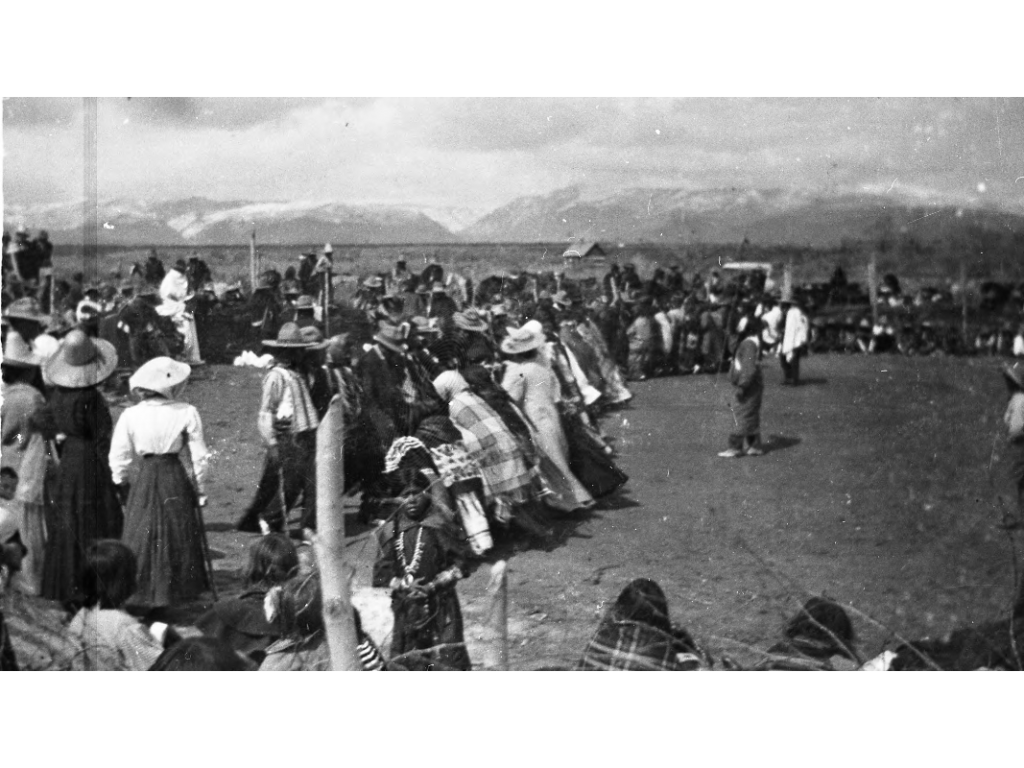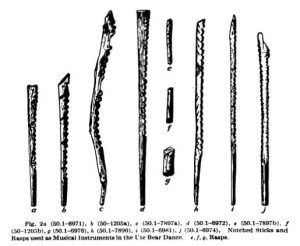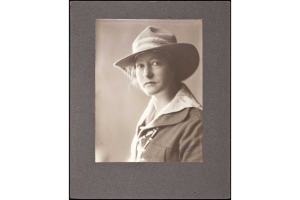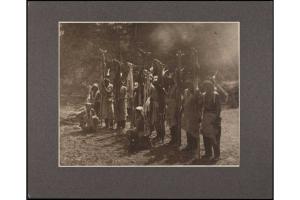The Gathering of Nations is North America’s biggest powwow in history. They have been celebrating their history and culture all as one for the past 41 years (1). Along with the Powwow, this now three-day celebration also includes events like Miss Indian World, a Horse Parade, and the Indian Trading Market.

One of the first logos for The Gathering of Nations (Akwasasne Notes, Vol. 21, No. 6, Dec. 1989.) (5)
The Gathering of Nations was started back in 1983 by a man named Derek Mathews, who still manages the event today along with his wife and daughter. After hosting for so long, and at the level this event rose in popularity, many Native Americans were curious and outraged why Derek, an African American, was managing such a big cultural event. In an interview with the Chicago Tribune, he states that “They [Lakota holy men he met with in South Dakota] said I was the one to carry it forward. It needed to be somebody outside of the tribal boundaries,” he recalled. “That way it could be entrusted to someone who would carry it for all tribes” (2). In this article, he later states that he did indeed have Native ancestors, relatives of the Cherokee Nation, that he did not know about until he went searching.
Written in the Akwesasne Notes Vol. 17, No. 6 in 1985, attendance after the first two years of hosting was over 1,000 dancers from more than 200 Native American Reservations and Reserves (3). Derek states in an interview with the Gathering of Nations Powwow team, the following year from the Akwesasne Notes article in 1985 was the year they needed to move to a new venue since their current place was too small (4, 1:09). Still taking place in Albuquerque, New Mexico, the Gathering of Nations is the largest Powwow in North America today with over 70,000 attendees from over 565 tribes.

An advertisement, and change of dates and venue, for the 1986 Gathering of Nations. (Akwasasne Notes, Vol. 17, No. 6, Dec. 1985.)
Sources:
- “Gon History.” Gathering of Nations, 9 Sept. 2023, www.gatheringofnations.com/history/#:~:text=The%20Gathering%20of%20Nations%20is%20produced%20and%20managed%20by%20Derek,%26%20Melonie%20Mathews.
- “Impresario Creates Controversy with Powwow Success.” Chicago Tribune, Chicago Tribune, 21 Aug. 2021, www.chicagotribune.com/2003/06/25/impresario-creates-controversy-with-powwow-success/.
- The Akwasasne Notes, Vol. 17, No. 6, Page 15. Published December, 1985. The Newberry Library, Rooseveltown, NY. https://www.indigenoushistoriesandcultures.amdigital.co.uk/Documents/Detail/akwesasne-notes-vol.-17-no.-6/7027181?item=7027189
- “Inside GON with Derek Mathews.” Youtube, Gathering of Nations Powwow, 5 Nov. 2012, youtu.be/XDT45cjhZxQ?si=cICvAqLpyI4O0GKc.
- The Akwasasne Notes, Vol. 21, No. 6. Published December, 1989. The Newberry Library, Rooseveltown, NY. https://www.indigenoushistoriesandcultures.amdigital.co.uk/Documents/Detail/akwesasne-notes-vol.-21-no.-6/7027271?item=7027287






